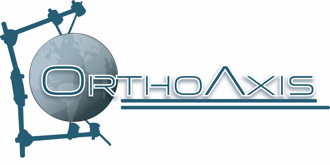Product Overview
For your patients whose arthritis is too severe for a HemiCAP®, Arthrosurface® also offers the CheckMATE® Fusion plate, a MTP Arthrodesis system. This system features low profile & anatomically pre-contoured plates with an interfragmentary screw guidance system to provide accurate & rapid installation. There are multiple plate options with either a combination of locking and non-locking holes or all-locking variable angle holes for primary or revision cases.
Product Features
• Custom low profile elevator to gain exposure of metatarsal head and phalangeal base
• Multiple plate options for primary or revision cases
• Variable angle locking holes allow desired orientation of screw placement
• Built in templates for sizing purposes
• Low profile, anodized titanium alloy bone plate
• Interfragmentary screw guide eliminates the need for fluoro guidance and eyeballing
• Tack pins eliminate drilling, stabilize the plate and create pilot holes for the screws
• Color coded nubbins for locking and non-locking screws built into the plate are provided pre-assembled and sterile
• Depth gauge is built into the inter-fragmentary screw guide
• Compression clamp technology built into the plate allows up to 2mm compression across the MTP joint
Surgical Technique
The CheckMATE® Arthrodesis System consists of a anatomic Bone Plates (Standard or All-Locking; Right or Left) and Bone Screws (locking, non-locking & interfragmentary). The instruments are organized in the order of surgery, proceeding from left to right and top to bottom. The procedure begins with preparation of the 1st metatarsal head and phalangeal base using the cup and cone reamers. The appropriate precontoured Bone Plate is selected. The laser line etch mark on the plate is aligned with the 1st MTP joint. The plate is temporarily affixed by placing tack pins distally, and proximally within the compression slot. If using the standard plate, the joint is reduced using the Compression Clamp which is positioned on the compression slot tack pin and on one of the distal nubbins. A Tack Pin is then inserted in the other proximal bone plate hole(s) to maintain the compression. If using the all-locking plate, the proximal tack pin is removed and an appropriate length non-locking screw is inserted. The ramp feature on the compression slot of the all-locking plate provides dynamic compression at the joint as well as at the plate to bone interface as the non-locking screw is inserted and makes contact with the plate.
The Interfragmentary Aimer is then placed in a distal-medial to proximal-lateral orientation across the 1st MTP joint, followed by creation of a pilot hole using a guide wire through the aimer. The Depth Gauge on the aimer is used to determine the appropriate length of the Interfragmentary Screw, which is inserted using the Hexalobe Driver. Following this step, if using (i) Standard Plate: the non-locking screws are inserted into the non-locking bone plate holes (one with gold nubbins) after removing the nubbins and measuring the screw length required using the depth gauge. This procedure is repeated for the locking screws that are placed in the locking bone plate holes (one with blue nubbins). In the final configuration, the plate has 2 Non-Locking Screws and 4 Locking Screws (ii) All-Locking Plate: the locking screws are inserted into the locking bone plate holes (one with blue nubbins) after removing the nubbins and measuring the screw length required using the depth gauge. In the final configuration, the plate has 6 Locking Screws and 1 Non-Locking Screw. (https://www.arthrosurface.com)
Technique Tips
Reviews
X-Rays




















